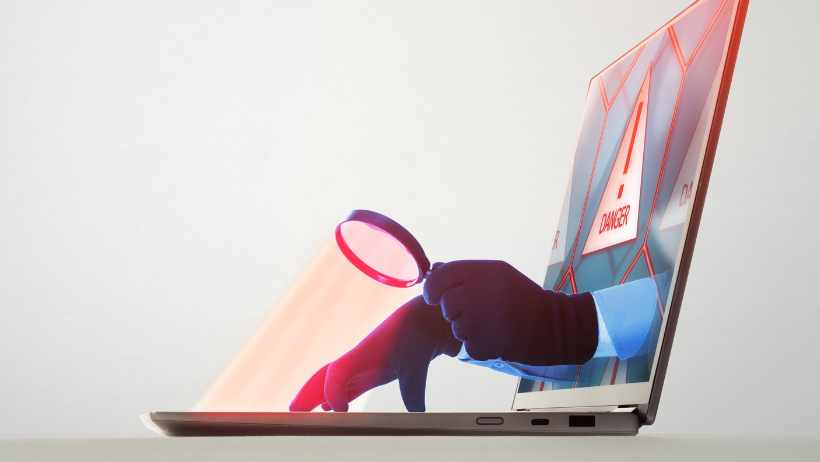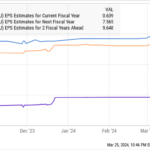
Prevent identity theft by understanding how criminals work, what to do if you’re a victim, and being informed.
Identity theft affects millions of Americans annually, causing financial and personal harm. Mail theft, garbage diving, phishing emails, and data breaches are all part of this growing problem.
People need to be proactive in their attempts to prevent identity theft and take the required safety measures to preserve their finances and personal information. This entails putting measures into action including switching to credit cards from debit cards, being cautious when entering passwords and PINs, purchasing safely online, and making use of third-party payment systems.
Checking mail, credit reports, children’s information, social media, and medical data are all important. In the unfortunate situation of identity theft, respond quickly. Contacting financial institutions, credit bureaus, and police and taking steps to safeguard and restore one’s identity are examples. By staying abreast of new schemes and prioritizing money and personal data, identity theft may be avoided.
Approaches to Identity Theft
Dumpster diving
Dumpster diving is a form of identity theft in which criminals look for personal information by going through recycling bins, dumpsters, and trash cans. Bank statements, credit card bills, and other papers that have sensitive information on them should be thrown away. This information could be used by thieves to take on your identity and carry out fraudulent actions.
Theft of mail
Another popular tactic employed by identity thieves is mail theft. They might take letters out of your mailbox or intercept it in the mail route. Pre-approved credit card offers, bank statements, and other financial documents containing personal information are of great interest to thieves. They can access your bank accounts and perform unlawful activities by stealing your mail.
Sweeping
The process of getting your credit or debit card information using a tiny gadget known as a skimmer is known as “skimming.” These gadgets are frequently mounted on payment terminals, petrol stations, and ATMs. The card number, expiration date, and CVV code are all collected by the skimmer when you swipe or insert your card. After that, thieves can use this data to construct fake cards or buy things online.
Email phishing
Phishing emails are bogus correspondence that seem to be from reliable sources, such banks, governments, or internet merchants. Frequently, these emails have links in them that take you to phony websites intended to steal your personal data. Hackers employ a variety of strategies to persuade you to reveal private information, including credit card numbers, passwords, and social security numbers. It’s crucial to thoroughly examine emails and stay away from clicking on dubious links that request personal information.
Smirking
Smishing is a technique of identity theft in which someone sends phony text messages to someone in an attempt to coerce them into disclosing personal information. These texts may ask you to click on websites or text sensitive information, and they frequently seem to be from reliable institutions like banks or government organizations. When you receive unexpected or unsolicited SMS, it’s crucial to be cautious and not give out personal information without first confirming with the sender.
Malicious emails
dangerous emails, sometimes referred to as malware emails, are intended to infect your computer or mobile device with dangerous software. These emails frequently contain links or attachments that, when clicked, infect your device with dangerous software. Once compromised, hackers can obtain sensitive data such as bank account numbers, passwords, and other personal information. It is imperative to exercise caution when opening attachments from unknown senders and to avoid clicking on links in dubious communications.
Data leaks
When a hacker obtains illegal access to a business or organization’s database, personal information belonging to clients or users is compromised. This is known as a data breach. Sensitive information including names, addresses, credit card numbers, and social security numbers may be made public by these breaches. After stolen, thieves might use this information to commit further frauds, including identity theft. Regretfully, in the current digital era, data breaches are happening more frequently, underscoring the significance of protecting personal data.
Keeping Your Identity Safe
Safeguarding private data
Safeguarding your personal data is one of the best defenses against identity theft. This include protecting your date of birth, social security number, bank account number, and other private information. When throwing away documents that include personal information, shred or destroy them. You should also exercise caution when disclosing personal information over the phone or online.
Making use of credit cards rather than debit cards
An extra line of defense against identity theft can be obtained by using credit cards rather than debit cards. Federal laws and enhanced fraud prevention practices are frequently found on credit cards, limiting your liability for fraudulent charges. Furthermore, the fact that credit cards aren’t connected to your bank account directly lowers the possibility that fraudsters will access your money.
Using PINs and passwords with caution
Developing strong, one-of-a-kind PINs and passwords will help safeguard your private information. Steer clear of passwords that are simple to figure out, such your birthday or just “password.” Instead, make use of a mix of special characters, numerals, and capital and lowercase letters. Furthermore, never give out your PINs or passwords to third parties, and refrain from writing them down in places where they are readily visible.
Purchasing safely online
Make sure you’re shopping securely online while you conduct your purchasing. Avert making transactions on open Wi-Fi networks by searching for websites with secure connections (https://), as these could be targeted by hackers. When divulging personal information online, use caution and limit your shopping to reputable sites with safe payment methods.
Setting up virus protection software
Anti-malware software can help protect your devices from identity thieves and protect your personal data. These software tools are capable of identifying and eliminating spyware and other dangerous software that could be used to steal your data. Update your anti-malware program frequently, and perform scans to find any possible dangers.
Making use of outside payment providers
When making purchases online, using third-party payment services like PayPal or Apple Pay can offer an additional degree of security. By serving as a middleman between you and the vendor, these services make sure that the seller does not receive direct access to your payment details. To protect your financial transactions, they frequently provide extra security measures like buyer protection.
Keeping an eye on snail mail
Monitoring your snail mail on a regular basis will assist thwart identity theft. Watch out for any unusual or questionable letter, as it can be a sign that someone is abusing your personal data. Report any lost or stolen mail to your local post office right away, and for extra precaution, think about using a P.O. box or a closed mailbox.
Examining credit reports
It can be helpful to routinely check your credit reports for any indications of identity theft or illegal activities. Every year, you have the right to a free copy of your credit report from each of the three main credit bureaus: TransUnion, Equifax, and Experian. Examine these reports carefully for any errors or questionable activities, and report any that you find right once.
Safeguarding the data of minors
Children may be victims of identity theft due to their clean credit histories. Keep your kids’ birth documents, social security numbers, and credit reports safe. Share their information carefully, particularly online or with firms without stringent security measures.
Being cautious on social networking
Social media offers a lot of personal data to identity thieves. Use cautious when posting sensitive information on social media and adjust your privacy settings to limit who may access it. Avoid friend requests and connecting with strangers since they may be concealing something.
Examining medical records
Medical data might potentially be a target for identity thieves looking to steal prescription drugs or perpetrate fraud. Check your billing records and medical statements frequently for any mistakes or questionable activities. Report any differences you see to your insurance company or healthcare provider right away.
Steps for Victims of Identity Theft
Making financial institution contacts
It’s critical that you get in touch with your financial institutions right once if you fall victim to identity theft. Notify them of any illegal transactions or fraudulent activity on your accounts. They can assist in freezing your accounts, look into any fraudulent charges, and assist you in getting any money that has been stolen back.
Making contact with credit reporting agencies
Get in touch with Experian, Equifax, and TransUnion, the three main credit bureaus, to report identity theft and set up a fraud alert on your credit reports. This notice causes prospective creditors to exercise further caution before extending credit in your name by warning them that you might be a victim of identity theft.
Making contact with law enforcement
Inform your local law enforcement agency about the identity theft and send them all the relevant information and supporting proof. This may aid in the identity thief’s investigation and prosecution. Additionally, think about reporting identity theft to the Federal Trade Commission (FTC) by using their IdentityTheft.gov website, which offers assistance and services to victims of identity theft.
Taking the required actions to preserve and restore identity
Identity theft recovery can be a difficult and drawn-out procedure. To restore your identity, adhere to all the recommendations made by financial institutions, law enforcement, and credit bureaus. To make sure that your personal information is secure going forward, this may entail changing passwords, keeping an eye on your accounts, upgrading security measures, and routinely evaluating credit reports.
Remaining Aware and Alert
Recognizing the most recent scams
It’s critical to keep up with the most recent frauds and stealing strategies if you want to safeguard your identity. Stay informed about typical scams and how to avoid them by following news, website alerts, and resources from reliable sources. You can identify and prevent possible threats to your finances and personal information by using this knowledge.
Safeguarding finances and personal data
Identity theft prevention requires ongoing cash and data security. Protect yourself with anti-malware software, secure payments, and strong passwords. Check your credit reports and accounts for fraud. Staying attentive and proactive can drastically reduce your identity theft risk.
Stopping ID Theft
Identity theft prevention is key. By protecting personal data, using credit cards instead of debit cards, and using social media responsibly, you may dramatically reduce your chance of becoming a victim. Protecting your financial and personal data from identity theft involves proactive actions.


















